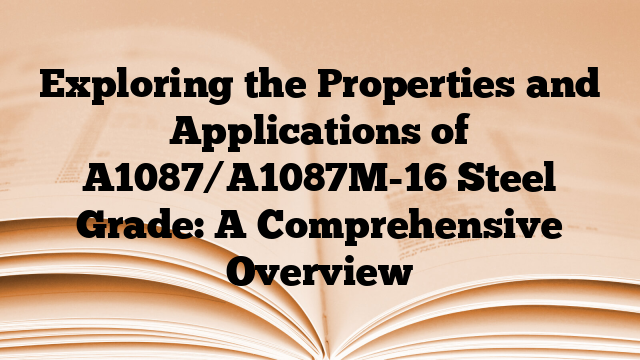The corresponding standard number for the A1087/A1087M-16 steel grade is A1087/A1087M-16. This standard specifies the requirements for carbon and high-strength low-alloy structural steel shapes, plates, and bars for use in bolted, riveted, or welded construction. It covers various grades of steel including Grade 36, Grade 50, Grade 55, Grade 60, and Grade 65.
The mechanical properties of the A1087/A1087M-16 steel grade are crucial in determining its suitability for various applications. These properties include yield strength, tensile strength, elongation, and impact resistance. For example, Grade 36 steel has a minimum yield strength of 36 ksi (250 MPa), while Grade 65 steel has a minimum yield strength of 65 ksi (450 MPa). The tensile strength ranges from 58-80 ksi (400-550 MPa) for Grade 36 steel and 70-90 ksi (485-620 MPa) for Grade 65 steel.
The chemical composition of the A1087/A1087M-16 steel grade is also important in understanding its properties and applications. Different elements such as carbon, manganese, phosphorus, sulfur, silicon, copper, chromium, nickel, vanadium, and columbium are added in varying amounts to achieve desired mechanical properties and corrosion resistance. The composition of the steel grade may vary depending on the specific grade.
The A1087/A1087M-16 steel grade finds various applications in the construction industry. It is commonly used in the fabrication of structural steel components such as beams, columns, and plates. The steel grade is suitable for both bolted and welded construction methods and can be used in buildings, bridges, and other structures. The high-strength properties of some grades make them suitable for demanding applications where structural integrity and load-bearing capacities are critical.
Overall, the A1087/A1087M-16 steel grade is a versatile and widely used material in the construction industry. Its mechanical properties, chemical composition, and corresponding standard number make it suitable for various structural applications.

